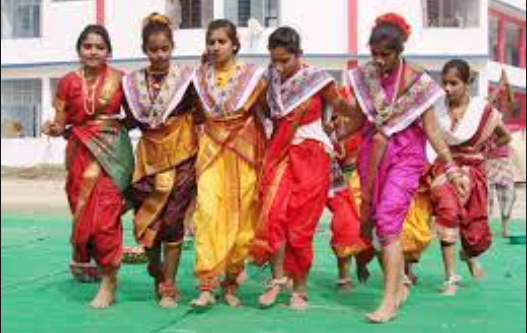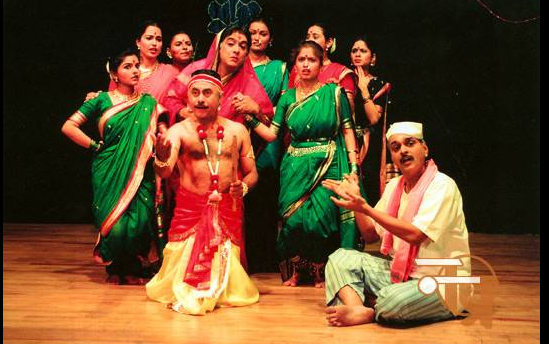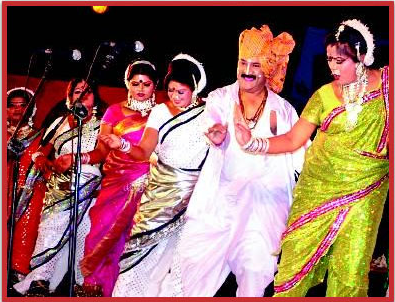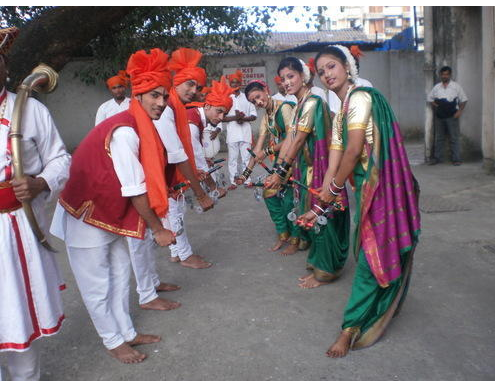Maharashtra folk dance
MAHARASHTRA FOLK DNACE
Folk dances of Maharashtra that makes you understand culture. Gifted with its rich culture and traditions, Maharashtra has differing types of folk dance forms.
Dindi and Kala - These are folk dances are religious folk dances, reflecting the bliss of Lord Krishna.
It is also a religious folk dance of Maharshtra.
On Ekadashi in kartik month of the Hindu calendar, this dance is performed.
This dance depicts Lord Krishna performing acts and playful nature.
Kala dance--------
It is a form of folk dance that describes the mood of Lord Krishna.
This folk dance is a symbol of fertility.
A man breaks the pot nd sprinkles yogurt on the female dancers.
The dancers wave sticks and swords in a fierce battle dance after the opening of the ceremony.
Dhangari Gaja- As the dhangars of the sholapur district of Maharashtra herd to green pastures for grazing for their cattle. So, They become acquainted with nature.
Inspired by the scenic beauty, they also compose poetry, called ovi writting. But, To pay homage to Lord Biruban annual festival is organized. During this festival, they spend their time with their family.
However, The people of Dhangar jati perform their traditional dance. Dhanagri Gaja on this occasion to take the blessings of Lord Biruba.
Traditional dress---
So, Dhoti, angrakha, pheta, and colorful handkerchiefs are traditional marathi dresses. That dancers wear while doing dance performances.
Koli Folk Dance- The dance performed by the koli caste known as koli dance. However, koli is a fishing tribe of Maharashtra. Like every community, this has its own identity which makes it different from other communities. It also has its own dress and dance. But, This dance consists mainly of those elements that are very familiar with- the ocean and fishing methods. So, Both men and women perform this dance.
Moreover, they form two groups of women and men are two rows and they stand holding each other's hands. Firstly, In this dance, the dancers make the agar of the boat moving in rows.
Display the action of the boating. The fishermen are in the second row holding hands which move towards the dancer of the opposite row. Two lines are broken and mixed together in this dance. When they symbolizing the sea waves. So, they put the net on sea waves and perform fishing.
Lavani Dance- However, it is an integral part of the folk theater style of Maharashtra. Moreover, the theme of dance can be taken from anywhere. This style is suitable for displaying emotions like valor, love, devotion, and grief. So, music, poetry, dance, and drama all form lavani. Their combination is so fine that it is almost impossible to separate them.
Dance form-
Adorned with colorful gaudy saris and gold ornaments. Dancers dance to the beat of the dholak. They gracefully wave their bodies. The theme of the song can be anything from religion to love etc. But most of the songs in this dance form are of love and disconnection.
Type- Dance is of two types
Nirguni Lavani - In Nirguni Lavani, where there is an inclination towards spirituality.
Shringari Lavani - Shringari Lavani is immersed in shringar rasa.
Povadas Dance- Povadas is one of the folk dances of the state. Marathi ballads form is used to present this dance. Great Maratha ruler, Shri Chhatrapati Shivaji Maharaj's life is the main topic of dance, dance describes the ruler's life. Shivaji is one of the best rulers who founded the Maratha Empire. In this, dancers (men dancers) wear traditional style turban and perform ballad- dance form. The dancer wear salwar and a colorful waistband tied with side knots.
Tamasha- It is a cosmic form of folk drama in India. Began in the 16th century in the state of Maharashtra in western India. So, This in itself is a distinct art. A spectacle is a form of drama. It started in Maharshtra in the 16th century. This folk art is slightly different from other arts here. The word 'tamasha' means "entertainment". Some researchers believe that it originated from sanskrit drama forms- Prahasana and Bhan. The 'Kolhati' community of Maharashtra performs this dance. These are the forms of krish alila in marathi religion literature which depict various events of the birth of Lord Krishna.
In addition, Tamasha also has a variety of verbal sarcasm and codified questions by Natukani, Songadya, and other Characters. Later, there is always the message of the victory of good over evil and truth over untruth.
Lezim dance- Lejim dance is a folk dance in Maharashtra. However, Social and religious festivals are prominent in the dances based on the martial arts of Maharashtra. The lezim dance is usually done in every region of Maharashtra. This dance also includes Ghoti Lejim, Ghungroo Lejim, Dakhni Lejim, and palita lejim. So, drums, tasha, and cymbals are prominent in lezim dance instruments.




















Comments
Post a Comment